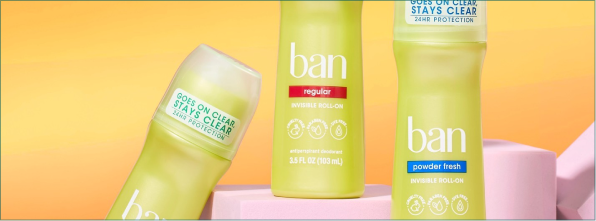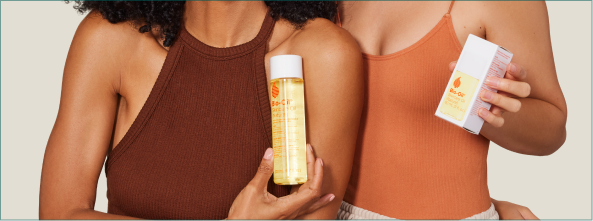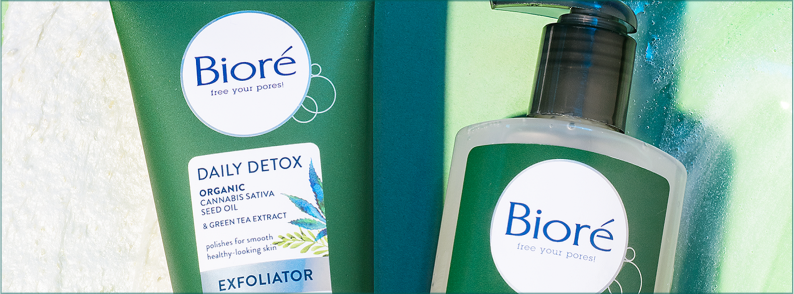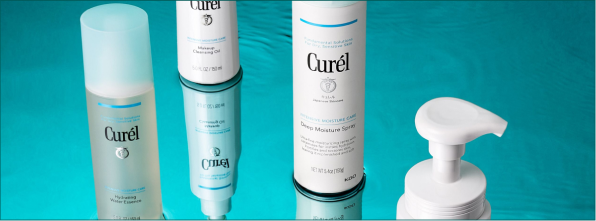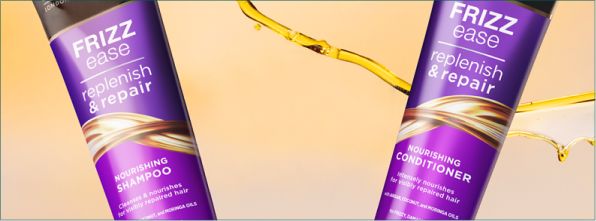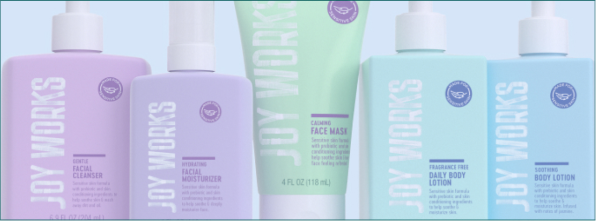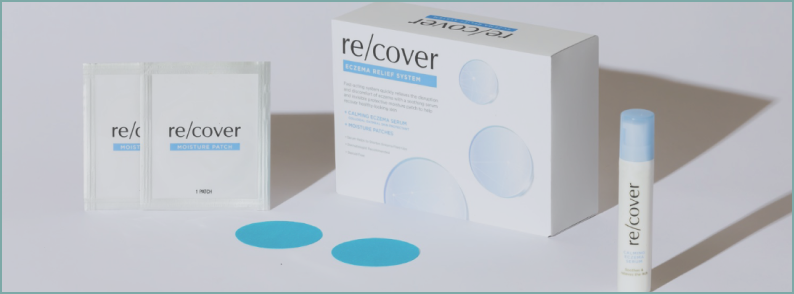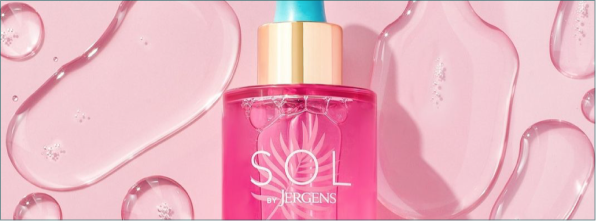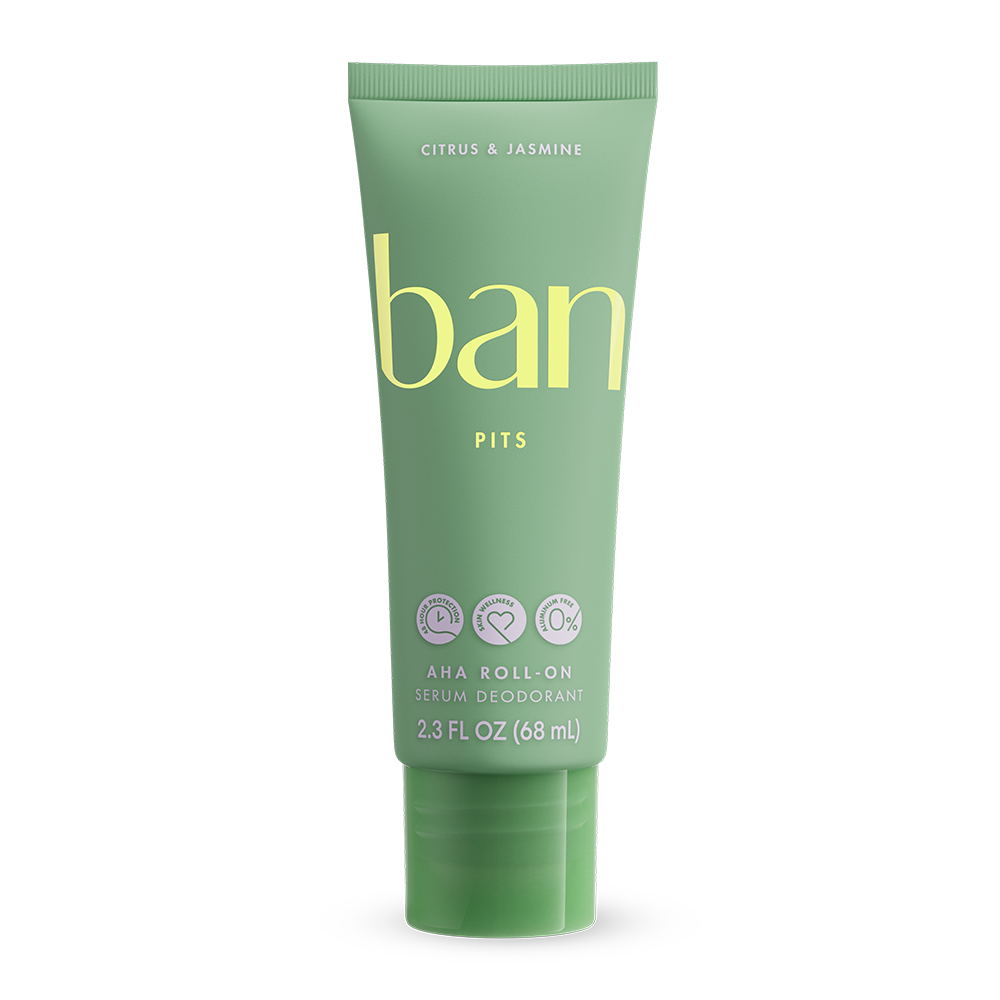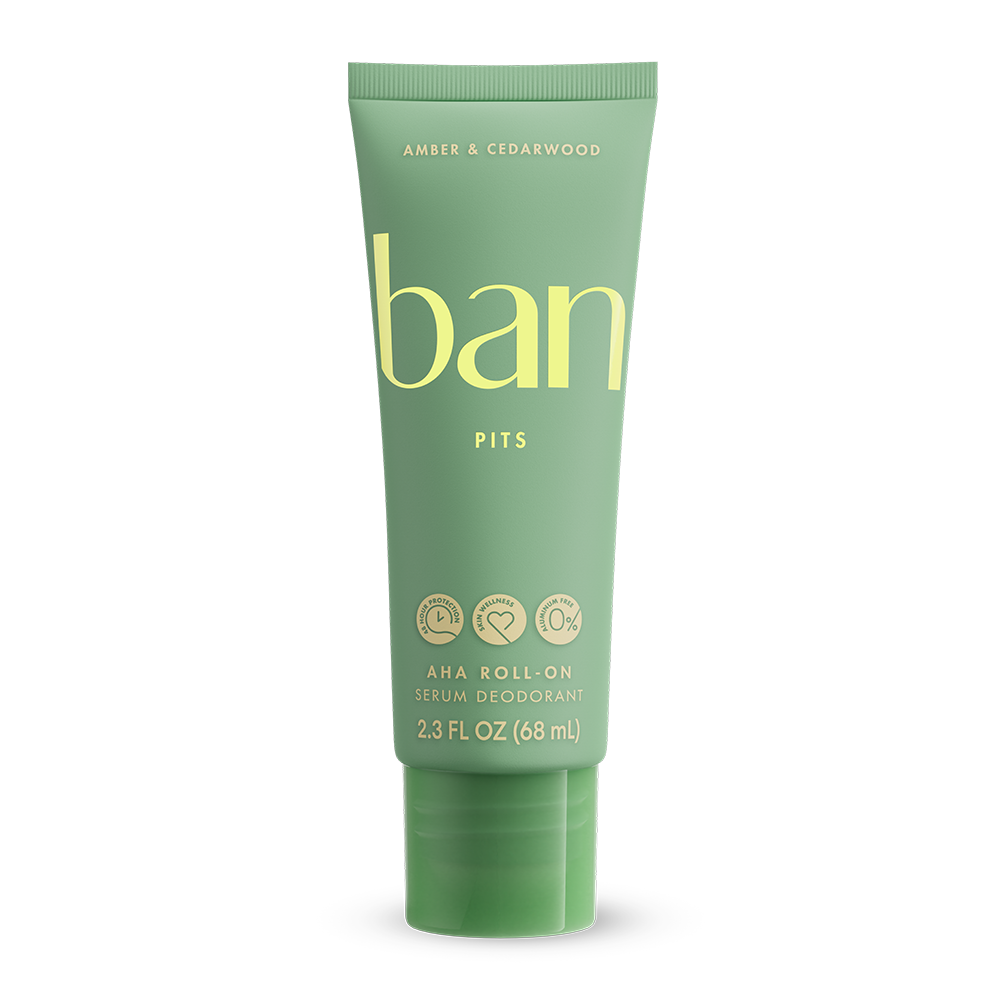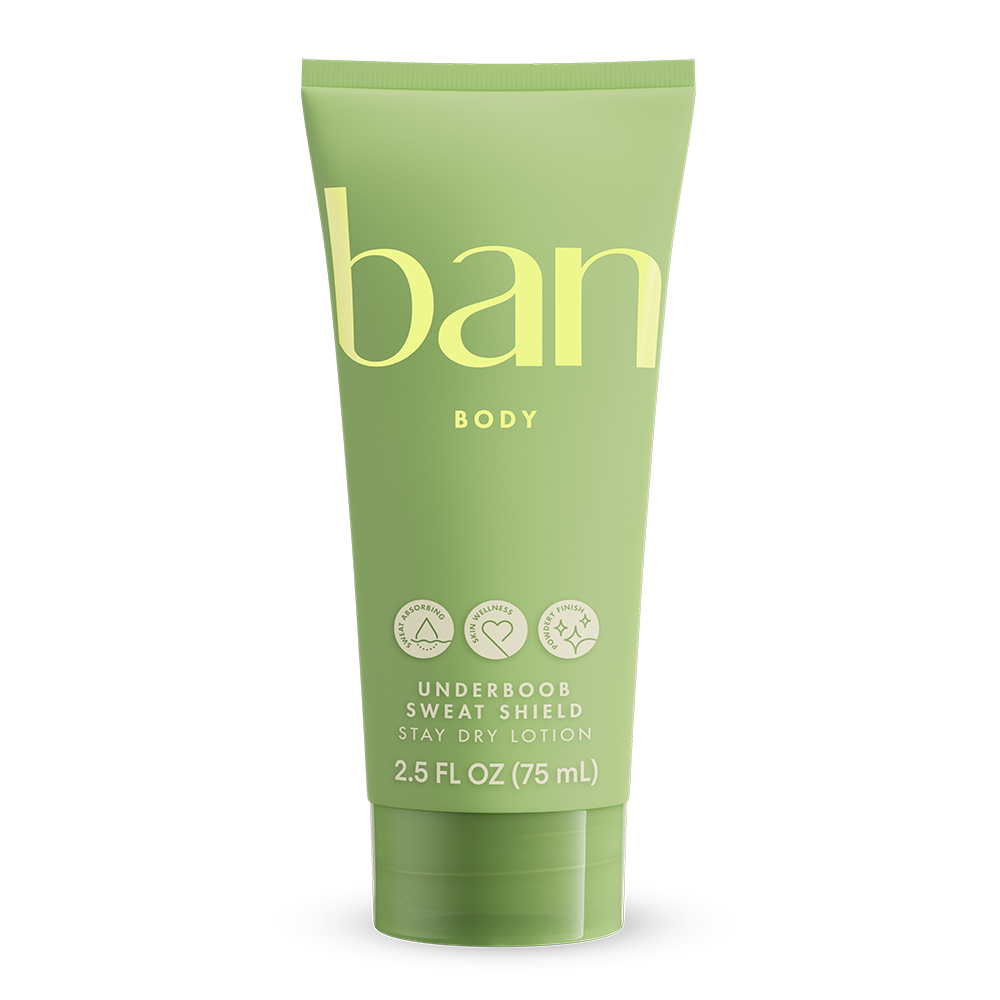FAQ Antiperspirant Deodorant
How Ban® Deodorants Works
What is the difference between a deodorant and an antiperspirant?
What is the difference between a deodorant and an antiperspirant?
Deodorants ONLY help to prevent odor while antiperspirants help prevent BOTH wetness and odor. Antiperspirants are also good deodorants because the active ingredients are both antibacterial and reduce sweat which is broken down by bacteria to form odor. Ban®products also include special ingredients to target specific sources of odor. Learn more about thedifference between deodorant and antiperspirantby visiting our blog!
How do antiperspirants work?
How do antiperspirants work?
Perspiration is created by the sweat glands when we are overheated or stressed. An antiperspirant is designed to stop perspiration by combining with the moisture to block the release of more sweat. Learn more abouthow antiperspirants workby visiting our blog!
How does the product keep me odor free?
How does the product keep me odor free?
Body odor is caused when bacteria break down perspiration into smelly compounds. All Ban®antiperspirants/deodorants contain antiperspirant actives which reduce bacteria and perspiration. Ban®products also contain patented technology to target specific odors by either interfering with their generation or absorbing them.
What is stress odor, and why are Ban® Invisible Solids so effective in protecting from it?
What is stress odor, and why are Ban® Invisible Solids so effective in protecting from it?
The Ban® brand experts were the first to discover and address the two distinct types of stress related odors - spicy odor and s-odor. Traditional antiperspirant/deodorants merely mask odors and reduce odor-causing sweat in general. Ban® Invisible Solids, with Kihada extract and silver cancrinite, use patented, breakthrough technology to specifically target and virtually eliminate (not cover up) spicy and s-odor that other antiperspirant/deodorants may leave behind.
Are Ban® Antiperspirant Deodorant products antibacterial?
Are Ban® Antiperspirant Deodorant products antibacterial?
Yes, the active ingredients in antiperspirants are antibacterial by nature.
Which form of Ban® Antiperspirant Deodorant is most effective?
Which form of Ban® Antiperspirant Deodorant is most effective?
All of the Ban® products will significantly reduce perspiration; however, the invisible solids are the most effective.
Why doesn't the product go on clear as claimed? I see white marks on my clothes.
Why doesn't the product go on clear as claimed? I see white marks on my clothes.
The product does go on clear and will stay clear on the skin. However, once the product touches fabric, the different ingredients can be absorbed into the fabric which causes the product to show as white. This is especially noticeable on darker fabrics. Ban® roll-ons will give you the least whitening. Experiment with the amount you use as well. Using excessive amounts will contribute to product rub off and will likely not offer any better protection.
How do I remove the white residue left on my clothes as I dress and touch my underarms?
How do I remove the white residue left on my clothes as I dress and touch my underarms?
A damp cloth should remove any marks left on clothing or try a dry brush to rub off any invisible solid marks. Allow the spot to dry or blot with a dry/absorbent cloth or paper towel and then brush lightly to remove the powder stain. If the white marks are set or stubborn to remove, try pre-treating the spot with liquid detergent or spot remover and blotting with damp cloth. Follow recommended cleaning instructions for your garment. For even more tips onhow to remove deodorant stains, visit our blog!
Do I need to use Ban® products daily if I do not bathe daily? Is it still effective on Tuesday if I applied it on Monday?
Do I need to use Ban® products daily if I do not bathe daily? Is it still effective on Tuesday if I applied it on Monday?
The effectiveness of the product will vary for everyone. Some people find they do not need to use their antiperspirant/deodorant on a daily basis.
Can I use my antiperspirant to stop perspiration wetness in other areas of my body besides underarms?
Can I use my antiperspirant to stop perspiration wetness in other areas of my body besides underarms?
Antiperspirants are not intended for use on any other part of your body.
Are Ban® products tested on animals?
Are Ban® products tested on animals?
Ban products are not tested on animals. We do not test our products—or the materials within them—on animals.
We follow the conventions of the EU and other governmental bans on animal testing for cosmetics. Occasionally, laws and regulations require testing of materials outside of the cosmetics category. Since the 1980’s, Kao Corporation has been actively working together with industry associations and relevant third parties to find robust alternatives to animal testing which have been successfully adopted as international guidelines.
Our Roll-Ons also do not contain any animal derived ingredients making these products vegan friendly.
Are Ban® Products suitable for a vegan lifestyle?
Are Ban® Products suitable for a vegan lifestyle?
Our Roll-Ons are vegan friendly with no ingredients of animal origin and no animal testing.
How much product should I use?
How much product should I use?
Product use differs by the individual. As a general guideline, try using 3-4 back and forth strokes of a roll-on solid per underarm. Visit our blog for even more tips on how to apply roll-on deodorant.
Storage Tips
What is the shelf life of Ban® antiperspirant/deodorant?
What is the shelf life of Ban® antiperspirant/deodorant?
Up to three years, unless an expiration date is on the package. Expiration dates are used to ensure you receive the freshest product possible.
Why do I need to shake the roll-ons?
Why do I need to shake the roll-ons?
Shaking the product ensures that the formula is properly mixed, much like Italian dressing. The formula works best when it is fully suspended.
Will extreme temperatures harm this product? (I accidentally froze it or left it in my hot car.)
Will extreme temperatures harm this product? (I accidentally froze it or left it in my hot car.)
If you completely melt an invisible solid product (expose it to temperatures above 110 degrees Fahrenheit), the active ingredient may separate so the protection won’t be evenly distributed through the stick. You will not want to use the product if that happens. However, if it just gets soft, let it stand at room temperature and it should still be as effective as before.
Health
Do antiperspirants and deodorants cause breast cancer?
Do antiperspirants and deodorants cause breast cancer?
Antiperspirants and deodorants are safe. There is no evidence of harm from the use of antiperspirants or deodorants. Extensive population-based case-control studies in addition to many extremely thorough epidemiological studies of breast cancer risk have been reviewed by internationally known experts and have not found antiperspirant use to be a risk factor for breast cancer. Please visit our blog to learn more about antiperspirant ingredient safety.
Ingredients
Do Ban® Products contain aluminum?
Do Ban® Products contain aluminum?
Yes, they contain an aluminum salt as the active ingredient that reduces sweat production. All antiperspirant active ingredients allowed by law contain aluminum.
Is there alcohol in Ban® Antiperispirant/Deodorant?
Is there alcohol in Ban® Antiperispirant/Deodorant?
There are different types of alcohol. None of the Ban® products contain the type of alcohol that would sting or burn broken or irritated skin. The alcohols present are solid waxes, used to thicken a product and provide a dry skin feel. They will not burn or sting broken or irritated skin.
Is there baking soda in Ban® Antiperspirant Deodorant?
Is there baking soda in Ban® Antiperspirant Deodorant?
Baking Soda is the common name for sodium bicarbonate. It is well known as a multipurpose ingredient used in cooking, cleaning and household odor prevention. Some natural deodorants have chosen to use baking soda with the purpose of preventing underarm odor. While there are many scientific studies measuring baking soda benefits, there are none that show effects on underarm odor. More concerning is the chemistry of this material. It is highly alkaline at 4 pH units higher than your skin. The skin’s pH is crucial to maintain good skin health. Increasing the pH can damage the skin, potentially resulting in reduction of the skin’s protective barrier function, as well as symptoms such as itching, burning, and/or rashes.
A core value of the Ban Brand is to ensure uncompromising safety standards. Our formulas are developed with other materials that are more effective against odor and do not damage or irritate the skin.
Do Ban® Products contain dyes?
Do Ban® Products contain dyes?
Dyes are obtained from both natural and synthetic sources. They are used in personal care products to provide an aesthetically pleasing color to enhance the overall experience during usage. They may also be used to mask an unattractive appearance resulting from some of the other ingredients in the formula. Our Ban antiperspirant formulas do not require these functions and do not contain dyes.
Does the aluminum ingredient found in many antiperspirants contribute to Alzheimer's?
Does the aluminum ingredient found in many antiperspirants contribute to Alzheimer's?
There is no scientific evidence of any link between aluminum and Alzheimer's. For more information, please visit www.alz.org and see Myth #4.
Are there parabens in Ban® Antiperspirant Deodorants?
Are there parabens in Ban® Antiperspirant Deodorants?
Parabens are preservatives used to keep health and beauty products fresh by preventing the growth of harmful bacteria. They have been extensively studied and determined to be safe for usage in personal care products by expert scientific panels and governmental regulatory agencies. Parabens are also naturally occurring in many foods that we enjoy as part of a healthy lifestyle. These include cucumbers, carrots, onions, blueberries and cherries.
Although these preservatives have been evaluated as safe for use, we recognize that some consumers have chosen to avoid usage of parabens. We confirm for these consumers that our Ban formulas do not contain parabens.
Do Ban® Products contain phthalates?
Do Ban® Products contain phthalates?
Phthalates are a group of materials that were historically used in cosmetics for three purposes: to improve fragrance performance, improve longevity of films such as nail polishes and hairsprays, and as a denaturant in alcohol to help prevent accidental ingestion by children.
We initiated a project to remove all phthalates from our Ban formulas many years ago. The removal was completed in 2016.
Are there phosphates in Ban® Antiperspirant Deodorants?
Are there phosphates in Ban® Antiperspirant Deodorants?
Phosphate is a generic term that refers to chemicals that include a phosphate molecule connected directly to oxygen molecules. There are many phosphates of different sizes and structure which impacts the function of the individual chemical material. Phosphates are abundant in nature. Inorganic phosphates are absorbed by plants from soil and are important for plant growth. Organic phosphates are found naturally in the body with diverse functions such as providing energy within the cell and for strengthening teeth and bones.
There has been an environmental concern with phosphates from laundry and dish detergents in fresh water. The phosphate is a nutrient that can lead to a proliferation of algae. Phosphates from these products was small compared to other sources and companies have identified alternative cleansing technologies to replace them.
Despite the multitudes of different phosphate chemicals and functions, our Ban formulas do not contain any phosphates.
Do Ban® Products contain sulfates?
Do Ban® Products contain sulfates?
Sulfates are commonly used as surfactants that provide cleansing by trapping dirt and oils so that they can be rinsed away with water. Antiperspirants do not provide a cleansing benefit. The materials in our Ban formulas are chosen to provide specific benefits and the formulas include only those materials needed for performance and safety. Sulfates are not found in either our solid or roll-on antiperspirant formulas
Is there talc in Ban® Antiperspirant Deodorants?
Is there talc in Ban® Antiperspirant Deodorants?
Talc is a mineral that has traditionally been used in cosmetics to absorb moisture, prevent caking of solid products or making a product opaque. Talc has been in the news in recent years in relation to health concerns. The concern actually comes from asbestos contaminant that is naturally occurring in this mineral. For cosmetics, talc can be purified to remove any asbestos allowing for safe usage.
Despite the Ban Brand’s policy to only use cosmetic grade talc purified to remove all asbestos, we initiated a project to remove talc from our solid formulas. Since 2008 all our Ban formulas, both solid and roll-on, have been talc free.
Miscellaneous
I noticed the Roll-On packaging looks different. Did you change the formula?
I noticed the Roll-On packaging looks different. Did you change the formula?
No, the formulas have not changed. This is the same great Ban Roll-On that you know, love, and trust! We made some changes to the label to shine a light on more of the good stuff that has always been a part of your Ban. Same Ban, slightly new look.
Why did Ban® Roll-On change the packaging?
Why did Ban® Roll-On change the packaging?
We value transparency and want to ensure that all Ban users understand what is—and isn’t—in our formulas. We all want to know that the products we use are safe and effective, and these icons communicate that our formulas are free of parabens and dyes and are not tested on animals.
